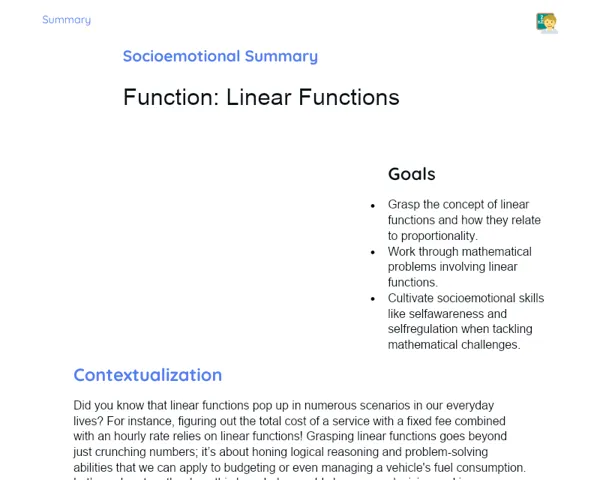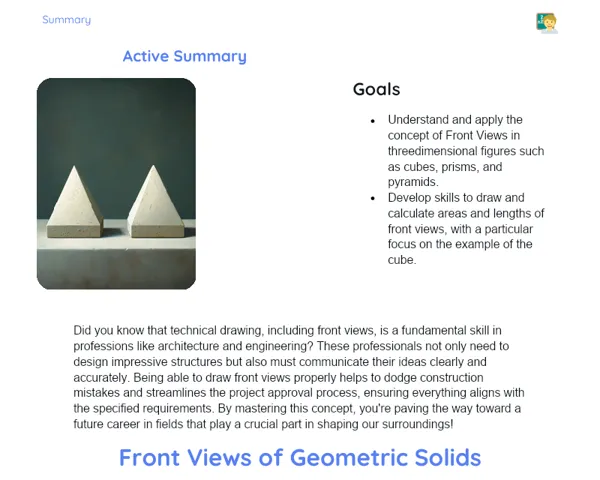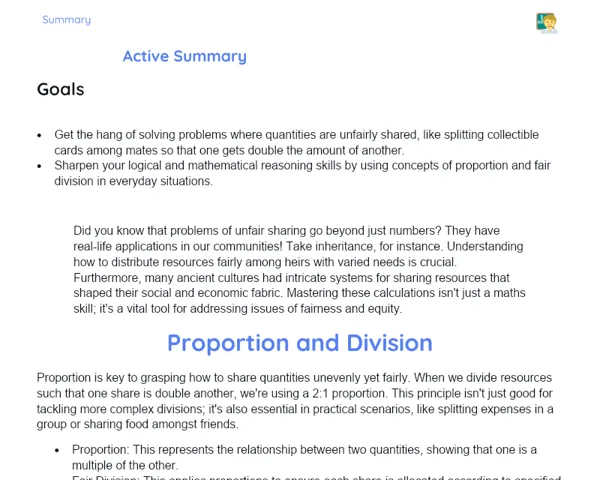Objectives
1. 🔍 Understand and apply the formulas to calculate the lateral and total surface area of pyramids.
2. 💡 Develop skills to solve practical problems involving the spatial geometry of pyramids, applying mathematical knowledge in a contextualized and meaningful way.
Contextualization
Did you know that pyramids are not just ancient structures but also fascinating mathematical marvels? The builders of the Great Pyramids of Giza in Egypt showcased remarkable knowledge of geometry and mathematics, using techniques that are still examined today. For instance, the ratio of 7:11 between the height and the base side, along with the precise angles of the pyramid faces, result in a stable and awe-inspiring structure. This practical application of geometry is a lasting testament to how mathematical study can influence massive projects and engineering.
Important Topics
Lateral Surface Area
To find the lateral surface area of a pyramid, you calculate the area of each triangular face and add them up. Since each lateral face is a triangle, you can use the area formula (base x height / 2). The total of all these areas gives you the lateral surface area.
-
To calculate the lateral area, multiply the perimeter of the base by the apothem (the distance from the base centre to the midpoint of any side) and then divide by 2.
-
Knowing the lateral area is crucial for estimating the amount of material needed to cover a pyramid, whether in actual constructions or models.
-
A solid grasp of the lateral area is essential not just for mathematicians, but also for engineers and architects who design effective three-dimensional structures.
Total Surface Area
The total surface area of a pyramid includes both the lateral surface area and the area of the base. The overall formula is the sum of the lateral area and the base area. This measurement is important for figuring out how much material is required to cover the entire pyramid, including the floor.
-
The total area is vital in real-world applications such as construction costs, where the material amount directly correlates with the total area of the pyramid.
-
Calculating the total area helps students understand how the various faces of a pyramid contribute to its complete surface.
-
This skill is particularly useful for students in fields like science and engineering, as many projects focus on optimizing material usage.
Practical Applications
Calculating the surface area of pyramids has numerous practical uses, from architecture and construction to product design and stage setting. Grasping how to apply these calculations in real-world contexts aids students in seeing mathematics as a useful tool rather than just a theoretical subject.
-
In architecture, calculating a pyramid's surface area accurately is essential for planning material distribution and ensuring structural stability.
-
In event and set design, knowing how to calculate the areas of pyramids facilitates the creation of efficient and visually appealing layouts.
-
These applications highlight for students the significance of mathematics not just in academia but also in their careers and daily lives.
Key Terms
-
Pyramid: A three-dimensional shape with a polygonal base and triangular lateral faces that converge at a vertex.
-
Lateral Surface Area: The total area of all the lateral faces of a pyramid.
-
Total Surface Area: The combination of the lateral surface area and the base area of a pyramid.
For Reflection
-
How does altering the dimensions of a pyramid's base affect the total surface area? Provide a practical example.
-
Why is it important to factor in the slope and type of base when calculating a pyramid's total area?
-
How can calculating the areas of pyramids be applied in professions like architecture and engineering?
Important Conclusions
-
We explored how to compute the lateral and total surface area of pyramids, applying mathematical formulas in both practical and historical contexts.
-
We discovered that pyramids, apart from being remarkable monuments, serve as examples of advanced geometric applications that continue to shape modern projects.
-
The skills developed not only help tackle academic challenges but also have practical uses in fields such as architecture, engineering, and design.
To Exercise Knowledge
- Create a pyramid model using cardstock and measure its faces to calculate the lateral and total area. 2. Use 3D modelling software to design various types of pyramids and determine their areas. 3. Design a room layout that incorporates pyramids, calculating the necessary areas for each one while considering both aesthetics and functionality.
Challenge
Pyramid Designer Challenge: Imagine you're an architect asked to design a new pyramid for a futuristic city. Using your knowledge of areas, create a plan that maximises the total area while ensuring structural stability.
Study Tips
-
Review the area calculation formulas for different pyramid types and practice with a range of examples.
-
Watch online videos and simulations that illustrate how pyramids were built and how mathematics played a key role.
-
Discuss the practical applications of area calculations in real projects with classmates or teachers and how this might influence your future career.



